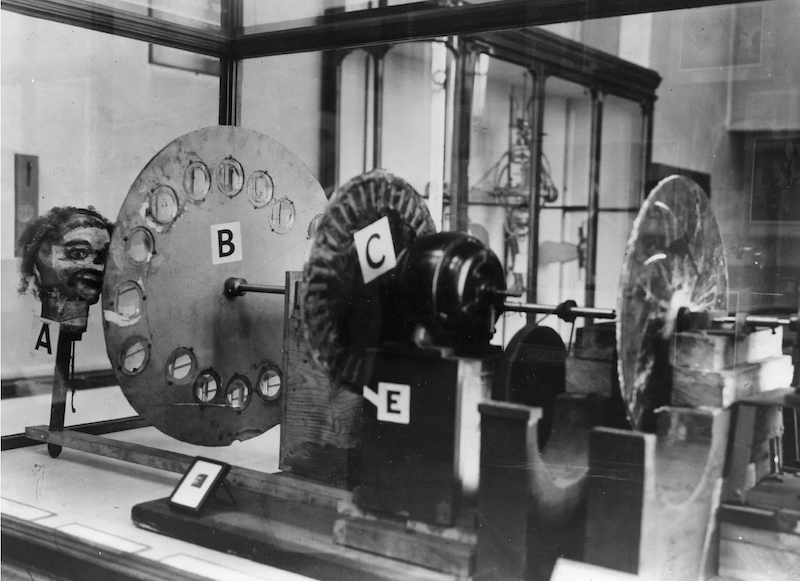
A competing system to the electronic television developed by Philo Farnsworth in the 30s was a mechanical version invented by John Baird, and demonstrated in 1925. The device relied on Nipkow discs — spinning discs with various holes in them. As the disc spun, the transmitter shone light through its holes, hitting the object being "filmed." That light then hit a sensor that captured the pattern and transmitted an electrical signal. The signal traveled via radio waves to a receiver with its own Nipkow disc rotating in sync with the original, allowing the initial image to be reproduced.